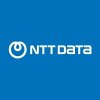
i
UST
Filter interviews by
Clear (1)
UST Senior Developer Interview Questions and Answers
UST Senior Developer Interview Experiences
1 interview found
I applied via Recruitment Consulltant and was interviewed in Oct 2024. There were 2 interview rounds.
(1 Question)
- Q1. Reverse an array using Java 8
- Ans.
Using Java 8, reverse an array of strings
Use Arrays.stream() to convert the array to a stream
Use Collections.reverse() to reverse the stream
Use Collectors.toList() to convert the stream back to a list
(2 Questions)
- Q1. Code a controller class , service class, entity and repository
- Ans.
Code a controller, service, entity, and repository classes for a software application.
Create a controller class to handle incoming requests and interact with the service layer.
Develop a service class to implement business logic and interact with the repository.
Define an entity class to represent data in the application.
Implement a repository class to handle database operations for the entity.
- Q2. Basic questions about steams
Interview Preparation Tips
- Spring Boot
- Microserviecs
Skills evaluated in this interview
Interview questions from similar companies

I applied via Naukri.com and was interviewed in Jul 2020. There were 4 interview rounds.
Interview Questionnaire
1 Question
- Q1. SOLID principals, oops, c# basics, SQL server, azure, design pattern
Interview Preparation Tips

Interview Questionnaire
1 Question
- Q1. HTML, CSS, BOOTSTRAP, PHP. SQL

I applied via Campus Placement and was interviewed before Jun 2020. There were 3 interview rounds.
Interview Questionnaire
2 Questions
- Q1. Simple program
- Q2. I wrote a simple program in C
Interview Preparation Tips

Interview Questionnaire
1 Question
- Q1. Tell me about yourself?basics on c , then about projects

I applied via Naukri.com and was interviewed before Oct 2019. There were 3 interview rounds.
Interview Questionnaire
1 Question
- Q1. What technical challenges have you faced in your work till now and how did you overcome it?
Interview Preparation Tips

I applied via LinkedIn and was interviewed before Dec 2020. There was 1 interview round.
Interview Questionnaire
1 Question
- Q1. What's is different between c and c++
- Ans.
C++ is an extension of C with object-oriented programming features.
C++ supports object-oriented programming while C does not.
C++ has classes and templates while C does not.
C++ has better support for function overloading and default arguments.
C++ has a standard library that includes many useful functions.
C++ allows for both procedural and object-oriented programming.
C++ is generally considered to be a more complex langu
Interview Preparation Tips
Skills evaluated in this interview

I applied via Naukri.com and was interviewed before Dec 2020. There were 3 interview rounds.
Interview Questionnaire
1 Question
- Q1. About the plsql..like functions.cursors.pakages and like that
Interview Preparation Tips

I applied via Company Website and was interviewed before May 2020. There were 4 interview rounds.
Interview Questionnaire
1 Question
- Q1. I surprised with one question that is are u ready to do job in anywhere
Interview Preparation Tips

I applied via Campus Placement and was interviewed in Apr 2020. There was 1 interview round.
Interview Questionnaire
2 Questions
- Q1. Are you willing to relocate?
- Q2. Why should I hire you?
Interview Preparation Tips
UST Interview FAQs
Recently Viewed
Tell us how to improve this page.
UST Interviews By Designations
- UST Software Developer Interview Questions
- UST Senior Software Engineer Interview Questions
- UST Software Engineer Interview Questions
- UST Devops Engineer Interview Questions
- UST Validation Engineer Interview Questions
- UST Java Developer Interview Questions
- UST Team Lead Interview Questions
- UST Associate Software Developer Interview Questions
- Show more
Interview Questions for Popular Designations
- Front end Developer Interview Questions
- Web Developer Interview Questions
- Backend Developer Interview Questions
- Software Developer Intern Interview Questions
- Junior Software Developer Interview Questions
- PHP Developer Interview Questions
- Full Stack Software Developer Interview Questions
- Software Developer Interview Questions
- Show more
UST Senior Developer Interview Process
based on 1 interview
Interview experience
Senior Developer Interview Questions from Similar Companies
Fast track your campus placements
UST Senior Developer Reviews and Ratings
based on 6 reviews
Rating in categories
|
Software Developer
2.1k
salaries
| ₹0 L/yr - ₹0 L/yr |
|
Senior Software Engineer
1.7k
salaries
| ₹0 L/yr - ₹0 L/yr |
|
Software Engineer
1.3k
salaries
| ₹0 L/yr - ₹0 L/yr |
|
System Analyst
1.1k
salaries
| ₹0 L/yr - ₹0 L/yr |
|
Validation Engineer
931
salaries
| ₹0 L/yr - ₹0 L/yr |

TCS

Infosys

Wipro

HCLTech
- Home >
- Interviews >
- UST Interview Questions >
- UST Senior Developer Interview Questions


















